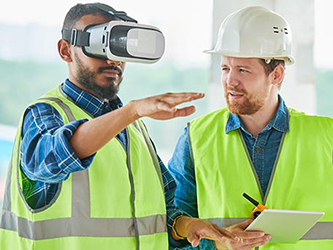
If you asked a thousand tech-savvy people to name the largest search engine in the world, chances are pretty decent all one thousand would answer “Google” without much hesitation.
By Marla Keene
But many of those same thousand people might be surprised to find out YouTube is Google’s runner-up.
When you think about it, the growing popularity of a search engine based around video content makes perfect sense. Most people tend to favour visual learning, and YouTube offers content on every subject from learning guitar to rocket building to how to replace your washing machine agitator. Visual learners tend to retain, comprehend, and more easily recall the information they’ve digested.
The enhanced retention, recall and comprehension qualities of visual learning are now driving a growing trend in process manufacturing for using VR (virtual reality) and AR (augmented reality) technologies to train and retrain workers for their jobs. Training based in AR/VR technology allow workers to visualize complex–and sometimes dangerous–tasks before actually completing those tasks, reducing both costly mistakes and possible on-the-job injuries.
AR and VR also allow new employees to be trained faster, with more retention of information. Additionally, fields that have a shortage of qualified workers often find that an AR/VR training program attracts younger candidates who are used to playing lifelike immersive video games in their free time. These candidates tend to take to AR/VR training quickly.
What is the difference between these terms? VR, or virtual reality, creates a digital ‘real world’ environment. The user is immersed into a fully simulated environment that they can engage with.
Such technology can be used to put workers into unusual situations like complete system failure scenarios, emergency disaster training, or access to typically inaccessible areas of your production facility–basically anything you could never do in reality. AR, or augmented reality, overlays features on to the real world. AR technology can be used to give more information about what the person is actually seeing.
This is especially helpful for retraining or ongoing training, such as proper maintenance or repair procedural steps. This is useful to give workers additional information on equipment that may be necessary for ongoing plant production, or for equipment that may be difficult or hazardous to access, so that employees can run through procedural steps virtually–and make mistakes virtually–before completing tasks.
How big is the trend for using AR/VR in process manufacturing? International Data Corp projected a worldwide investment in AR/VR process manufacturing training to exceed $240 million in 2017 with spending increases upwards of ten times that by 2022. Canadian process manufacturers have an excellent resource for these types of programs located in Kitchener, Ontario.
Conestoga Polytechnic has an education program specifically designed to interact with local manufacturers using applied research to foster better education for their students while helping local businesses grow. Its Virtual and Augmented Reality Lab (VARLab) created training programs and learning experiences for industries as varied as industrial manufacturing, agriculture technology, and early childhood education.
Russell Foubert, a professor at Conestoga, says their lab has seen an increase in VR training requests as well as requests for Augmented Reality projects relating to task training and work-assistance.
Technology writer Marla Keene works for AX Control.
Print this page
